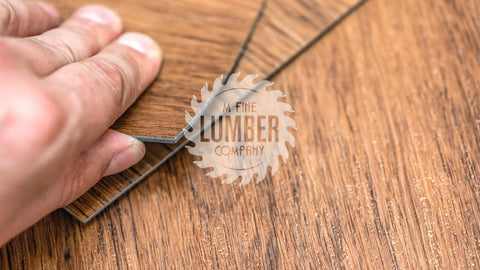Are you in the process of revamping your home with new and sophisticated wood flooring? If so, you probably recognize that this is an exciting project, but it definitely requires dedication and finesse. When installing a beautiful hardwood floor, both the type of flooring and existing subfloor play a crucial role. In today’s post, we’ll highlight the wood floor installation methods that will give you a perfect finish every time–keeping those gorgeous floors looking their absolute best.

The Floating Method
The floating method is one of the most preferred and efficient ways to install engineered hardwood flooring. This method involves installing the boards or tiles on top of an underlayment, either directly on the subfloor or a specific floating system. The main advantage of this approach is that it offers great sound absorption, which makes it perfect for areas with a lot of noise like large halls and other rooms in multi-family dwellings. Additionally, it is also much easier to perform since there is no need to glue down or nail any boards. Instead, they are connected together through the use of tongue-and-groove systems and click-lock mechanisms that keep them secured during the installation. Furthermore, this type of installation requires less preparation than other methods since most floating systems can be installed directly onto any smooth surface, such as concrete or even pre-existing floors.
Related: Prefinished vs Unfinished Hardwood Floors: Key Differences

The Nail Down/Staple Down Method
This method involves directly nailing the flooring planks into the subfloor, creating a strong and secure bond between the two surfaces. The nails used should be flat with teeth on either edge which will grip into the flooring plank and subfloor firmly. This method works best for engineered or solid hardwood flooring as it requires less material than other methods, but is not recommended for parquet or floating installations. To ensure a successful nail down installation, use a nail gun specifically designed for hardwood flooring and make sure that you are accurately nailing at the right depth so that each plank has enough space beneath it to allow for natural expansion and contraction due to changes in temperature and humidity.
This method can be beneficial when installing hardwood floors in high traffic areas as it provides superior support and stability. However, it is important to ensure that there are enough expansion spaces between the hardwood and any vertical obstructions such as walls or door frames to avoid cracking, buckling, cupping, or crowning of the flooring.

Glue Down
The glue down method is a popular installation technique for hardwood flooring that requires the use of an adhesive to attach the boards to the sub-floor. This method provides a strong bond between the two surfaces, allowing for greater stability and resistance to movement. Glue down floors are commonly used on solid wood boards, as this allows for easy installation since no click or tongue and groove system is needed. The application process involves spreading an adhesive across the sub-floor in rows, followed by placing individual boards into position. Once installed, it’s important to maintain adequate levels of humidity in the room, as too much moisture can cause damage to the floorboards and adhesive. This type of installation is sometimes preferred over others due to its cost-effectiveness and straightforwardness—it doesn’t require expertise or specialized tools like other methods do.

No matter what wood floor installation method you choose, remember that the quality of your floors will only be as good as the quality of the materials and tools you use. Use high-quality products from a trusted supplier to ensure that your floors look beautiful and last for years to come.




Comments (0)
There are no comments for this article. Be the first one to leave a message!